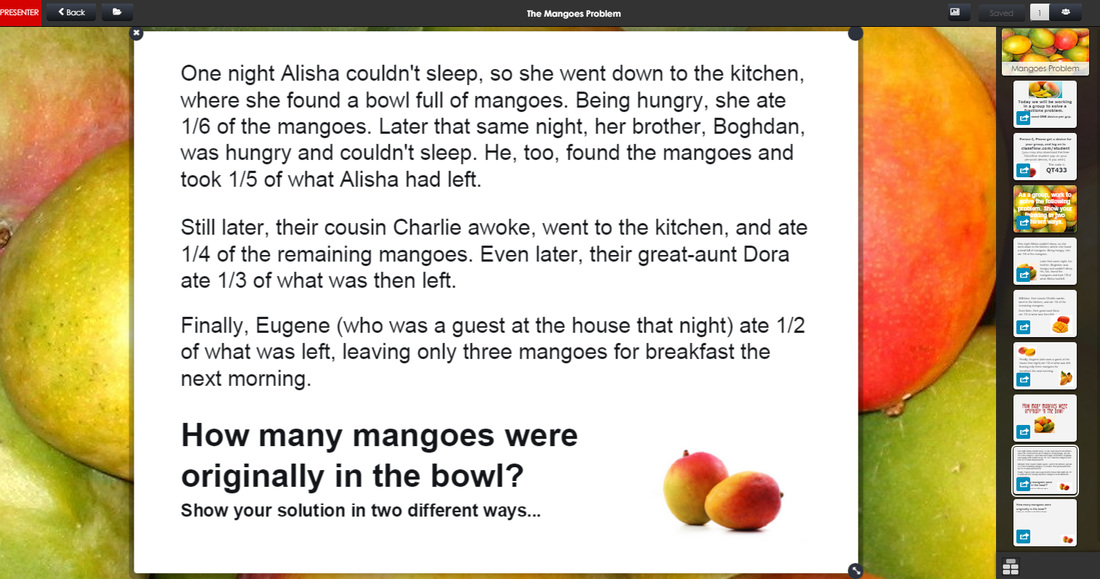I am therefore very grateful to my colleague in Grade 8 who presumed positive intentions when I recently asked about a math problem she had presented to her class, and which I hoped to use with my own class.
Behold, the Mangos Problem, in its original form:
I immediately set work re-wording the problem, and even put it into a format with which I could experiment with some new technology.
Behold:
This afternoon, the opportunity for said conversation arose, as we were on a planning 1/2 day to discuss our research project. First my colleague shared an incredibly powerful lesson on deconstructing "beauty", using the "golden ratio" and some common media images. Surprised by her insight into social justice when it came to women, power and body image, I used that discussion as a segway into the Mangoes Problem.
Wow, did she ever surprise me!
Without skipping a beat, she launched into an explanation of how she almost always creates "problematic problems" to encourage students to think about both the math and the "other" stuff that comes with it. In the case of the Mangoes Problem, she used the story structure to discuss the concept of hierarchy with her students, and to encourage them to question the hierarchy implicit in the classroom. ("I am not the keeper of the knowledge", she tells them, and encourages them to challenge the traditional teacher-student power structures, and take on more ownership of their own learning.)
I was very impressed.
And then I returned to Classflow, and reworded the problem back to the original text!

Originally this post was going to be about how I turned a culturally crappy math problem into a culturally proficient one, isn't Ms. Teschow so fabulous?
Instead, it turned into a blog post about Ms. Teschow eating humble pie.
Again.



 RSS Feed
RSS Feed